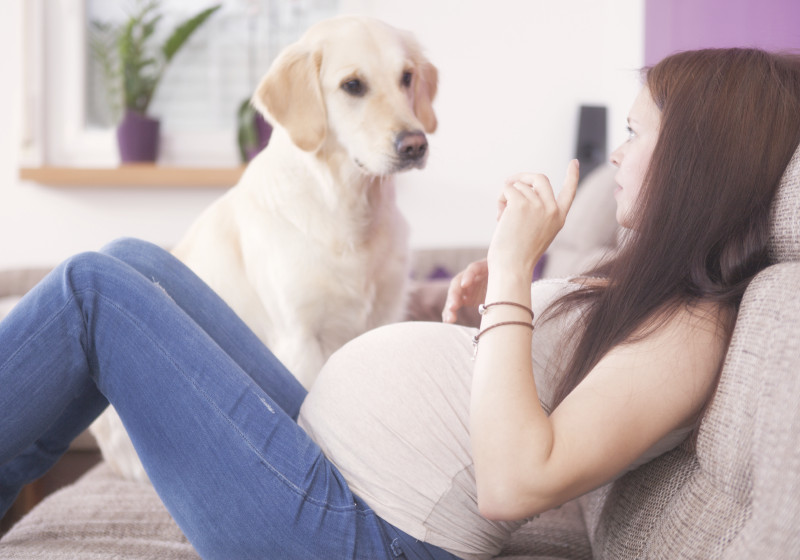Spring is upon us and I have had a number of enquiries from expectant mums and anxious partners, all wondering how their dog and new baby will get along. Over the next few editions I will be giving you top tips on what to do and what to avoid and, most of all, how to ensure the new baby is an object of your dog’s respect rather than viewed as the latest squeaky toy, or worse.
Remember, dogs are experts at reading us humans and if you are pregnant, you will be moving differently, acting differently and, yup, you’ll smell different too. Your pooch will already know changes are afoot. He may even be anxious. So it makes sense to take have a plan.
We will look at all the key stages, from preparation before birth, to toddler territory – when baby begins to move around and explore and when some dogs begin to wake up to the fact that the new, shrieking creature, with its jerky movements and insatiable appetite for everything the dog would prefer is his, is here to stay. Each step presents its own challenges, so if you own a dog and are pregnant, or planning to be, then don’t delay, do your homework now. The sooner you begin the easier it will be, especially if this is your first baby.
- Decide the rules of your house –and implement them with your dog. For instance, which rooms will he be allowed into? Will he be allowed on furniture? Be clear and be consistent.
- Start to train daily and get those basic obedience commands off pat, especially the ‘leave’ and the ‘off’. You are going to need snappy responses once you are trying to cope with dog and baby together. Clear rules will help your dog adapt and feel secure. So practice, practice!
- Identify and reduce attention-seeking or dangerous behaviours, like jumping up, pawing, mouthing or barking. If in doubt get professional advice.
- Ensure your dog has quality exercise and structured, interactive play with plenty of brain work, daily.
- If your dog chases things that squeak, or is fearful of certain noises, consider how he might react to the new baby and baby equipment.
- Get your dog used to all the new gadgets, smells, sights and sounds associated with a baby. Consider getting a baby noise CD to get your dog used to gurgles, squeaks and cries. Expose him to the smell of baby powder and lotion. Put the new baby equipment up and practice walking your dog with a pram. Even get him used to you walking around nursing a doll.
- Use games and reward to slowly expose your dog to all these new, exciting things, note and reward calm behaviour.
- Teach your dog a ‘settle’ command or to go to a safe area and ‘relax’ when you need him to. If your dog is a clingy and attention-seeking now, think how he’ll be when baby arrives. The last thing you’ll want is a dog whining or clambering over you when you need to change or feed your little one.
- Take time to teach your dog how to cope for periods alone. Give him appropriate chews, a stuffed Kong, or Nina Ottosson toys, to help him relax.
- Learn more about subtle doggie signals and body language.
- Identify and start to use designated dog areas, such as closed rooms or gated areas.
- Tethers and baby gates are a good way to limit your dog when you need to, but ensure separation is enjoyable with a nice chew or similar.
- Start a baby-friendly, flexible routine of feeding and activities that include your dog. Use these times to practice obedience skills.
- If possible, when baby is born, plan to expose your dog to your baby’s scent, before any physical introductions.
- There are plenty of good resources on introducing dogs and babies, so get ahead and start researching, the earlier the better.
Next time….. How to cope and what to do when the baby arrives.
Leonie St Clair, London Dogs Training


